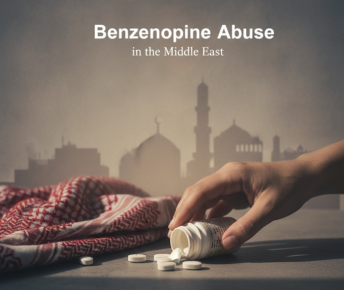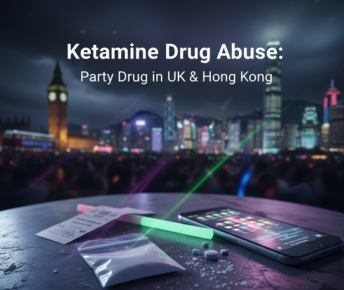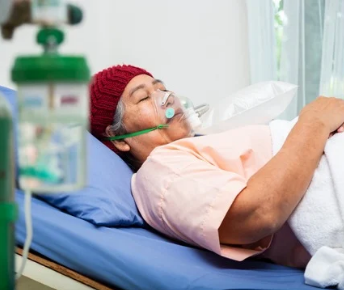Introduction
A dual diagnosis occurs when someone has both a substance use disorder and a mental health condition at the same time. This might mean coping with depression or anxiety while also struggling with alcoholism or drug addiction. And because the two problems often feed off each other, experts emphasize treating both together. Trying to address addiction without also helping the mental health issue is not very effective. Hence, let’s go through all the different types of dual-diagnosis treatments.
In other words, therapy must target not only the addiction behaviors but also the underlying causes of substance abuse. In this blog, we explore the main types of therapy used in dual diagnosis rehab, how they help, and why an integrated, holistic approach can support lasting recovery.
What is Dual Diagnosis?
A dual diagnosis occurs when someone has both a substance use disorder and a mental health condition at the same time. This might mean coping with depression or anxiety while also struggling with alcoholism or drug addiction. And because the two problems often feed off each other, experts emphasize treating both together. Trying to address addiction without also helping the mental health issue is not very effective. Hence, let’s go through all the different types of dual-diagnosis treatments.
Cognitive Behavioral Therapy (CBT)
Cognitive Behavioral Therapy is the single most widely used therapy in dual diagnosis treatment. CBT teaches individuals to recognize and change the “flawed patterns of thought” and behavior that underlie both addiction and mental illness. For example, if someone believes “I’m worthless,” CBT helps them challenge that negative thought and replace it with a more balanced one.
By practicing coping strategies and mindfulness, CBT can actually reduce symptoms like depression, anxiety, and substance cravings. In a dual diagnosis program, CBT is used to restructure unhealthy beliefs and to build skills that prevent relapse.
Dialectical Behavior Therapy (DBT)
Dialectical Behavior Therapy is a form of CBT that emphasizes emotional regulation and coping skills. Originally CBT was developed for borderline personality disorder, but now DBT has proven highly effective for dual diagnosis clients who struggle with intense emotions or impulsive behavior.
In DBT, individuals learn four key skill sets: mindfulness, interpersonal effectiveness, emotion regulation, and distress tolerance. For example, when a dual-diagnosis patient feels extreme anxiety, DBT teaches techniques like paced breathing or distraction to cope without self-medicating. It can significantly reduces self-harm, anxiety, and impulsivity in people with co-occurring disorders.
Also read: Also read: The Role of Dialectical Behavior Therapy (DBT) in Substance Abuse Treatment
Motivational Interviewing (MI)
Motivational Interviewing is a counseling approach that enhances a person’s own motivation to change. It is especially useful in the early stages of dual diagnosis treatment, when someone may feel unsure about quitting substances. MI is non-confrontational and patient-centered, which means therapists express empathy, avoid judgment, and gently guide clients to talk about their goings. By helping patients explore their own reasons for change, MI unlocks internal motivation.
Clinically, studies also find that including MI in treatment leads to better engagement, higher retention in therapy, and ultimately reduced substance use compared to no intervention. In other words, MI is an evidence-based way to get the treatment ball rolling sobriety.
Group and Family Therapy
Integrated group therapy is a hallmark of dual diagnosis rehab. These are structured therapy groups where clients work on mental health and addiction issues together. Groups and family therapies always improve outcomes by reinforcing the interconnected nature of recovery. In these therapies, clients share experiences, practice coping skills, and hold each other accountable in a supportive setting.
Family therapy is also crucial. Loved ones often carry stress, mistrust, or misunderstanding around addiction. Involving family members in therapy can rebuild communication and teach everyone how to support recovery.
Trauma-Informed and EMDR Therapy
Many people with dual diagnosis have histories of trauma, which can be a root cause of both mental illness and addiction. Trauma-informed therapy recognizes this by putting the patient’s safety and empowerment first. It means clinicians approach treatment with sensitivity. They create a safe environment, give clients control and choice, build trust, and help process painful memories at the client’s pace. This supportive framework is a philosophy that runs through every session.
Specific trauma therapies may also be used. For example, Eye Movement Desensitization and Reprocessing (EMDR) is an evidence-based treatment for PTSD that is often integrated into dual diagnosis care. EMDR uses guided eye movements while the person recalls traumatic memories, helping to “desensitize” those memories so they lose their intense emotional charge. Clinics also report that EMDR can significantly reduce PTSD symptoms, which in turn eases the emotional triggers for substance use.
Medication-Assisted Treatment (MAT)
In many dual diagnosis cases, medications play an important role alongside therapy. Psychiatric meds like antidepressants, mood stabilizers, or anxiolytics, can help normalize brain chemistry and relieve symptoms of depression, bipolar disorder, or anxiety, making it easier for patients to engage in therapy.
At the same time, addiction specialists may use medications for withdrawal management and relapse prevention. For example, buprenorphine or naltrexone can reduce opioid or alcohol cravings, while nicotine replacement can aid tobacco cessation. These prescriptions are part of an integrated model: as one expert source notes, comprehensive dual diagnosis programs include “medication management to alleviate symptoms and assist in substance withdrawal”. By stabilizing both mind and body, MAT helps clients focus on the therapy work ahead.
Holistic and Alternative Therapies
Beyond talk therapy and meds, many dual-diagnosis treatment centers use holistic approaches to heal the whole person. This can include yoga, meditation, and mindfulness exercises to reduce stress and improve emotional balance. Art therapy, music therapy, or drama therapy provide creative outlets for feelings that are hard to verbalize. Nutrition, exercise, and life-skills coaching help rebuild physical health and self-esteem.
This way, the clients benefit from a “mind, body, and spirit” approach. For example, yoga and meditation promote self-awareness and calm, while art therapy gives a safe channel to express trauma and hope. These complementary therapies don’t replace medical treatment, but they support recovery by teaching clients healthier ways to cope and rebuild identity after addiction.
Why Does Integrated Therapy Matter?
">Treating dual diagnosis effectively isn’t about picking just one type of therapy but more about blending proven methods to address both mental health challenges and substance abuse together. This is because the two conditions often fuel each other: untreated depression can trigger relapse, unresolved trauma can drive substance use, and addiction can worsen anxiety or mood swings.
An integrated approach combines different therapies like Cognitive Behavioral Therapy (CBT) to reframe negative thinking, DBT to manage intense emotions and build healthy coping skills, trauma-focused care to address root causes, and family therapy to strengthen support systems at home. Holistic activities like mindfulness, yoga, or art therapy further help people reconnect with themselves, reduce stress, and stay grounded through recovery.
When these therapies work together, people are more likely to stay engaged in treatment, manage cravings better, and gain a clearer understanding of the underlying causes of substance abuse. This creates a stronger foundation for rebuilding daily routines, repairing relationships, and maintaining long-term recovery.
And just to emphasize, no two recovery journeys look the same. That’s why true dual diagnosis treatment is never one-size-fits-all. Instead, it adapts to each person’s unique story, needs, and pace of healing. Integrated care treats the whole person, mind, body, and spirit, giving them the best chance to break the cycle and thrive beyond addiction.
Conclusion
Recovery from a dual diagnosis isn’t just about managing symptoms,it’s about rediscovering yourself and building a life you’re proud to wake up to each day. Healing is possible, no matter how long you’ve struggled or how hopeless it sometimes feels.
Everyone deserves a second chance. A chance to break free from old patterns, reconnect with family, rebuild trust, and find calm and clarity again. This is that chance. When you reach out for help, you’re not giving up, you’re choosing to believe that life can be different, and better.
If you or someone you know is living with both mental health challenges and substance abuse, know this: you are not alone, and you do not have to do this alone. The right support, at the right time, can open doors to a new chapter.
Take that first step. Embrace it fully. Give yourself permission to heal and make the most of this second chance.
Frequently Asked Questions
1. How do you deal with a dual diagnosis?
Dealing with a dual diagnosis requires an integrated approach that treats both mental health conditions and substance abuse at the same time. Dual diagnosis treatment centers use therapies like CBT, medication, and support groups to help people recover fully.
2. What are the benefits of dual diagnosis treatment?
">Dual diagnosis treatment helps people understand the root causes of substance abuse and mental illness together, reducing relapse. This combined care improves recovery outcomes and supports long-term well-being.
3. What is the new name for dual diagnosis?
The new term for dual diagnosis is often co-occurring disorders, which highlights that substance abuse and mental health conditions happen together. Many dual diagnosis rehab now use this updated term.
4. What is the best example of a dual diagnosis?
A common example of a dual diagnosis is someone living with depression or anxiety while also struggling with substance abuse, like alcohol or drug addiction. Dual diagnosis treatment centers help manage both at once for better results.
























 Yes, many offer serene environments and solid therapeutic frameworks. However, quality varies, so it’s essential to research accreditation, staff credentials, and therapeutic depth.
Yes, many offer serene environments and solid therapeutic frameworks. However, quality varies, so it’s essential to research accreditation, staff credentials, and therapeutic depth.




